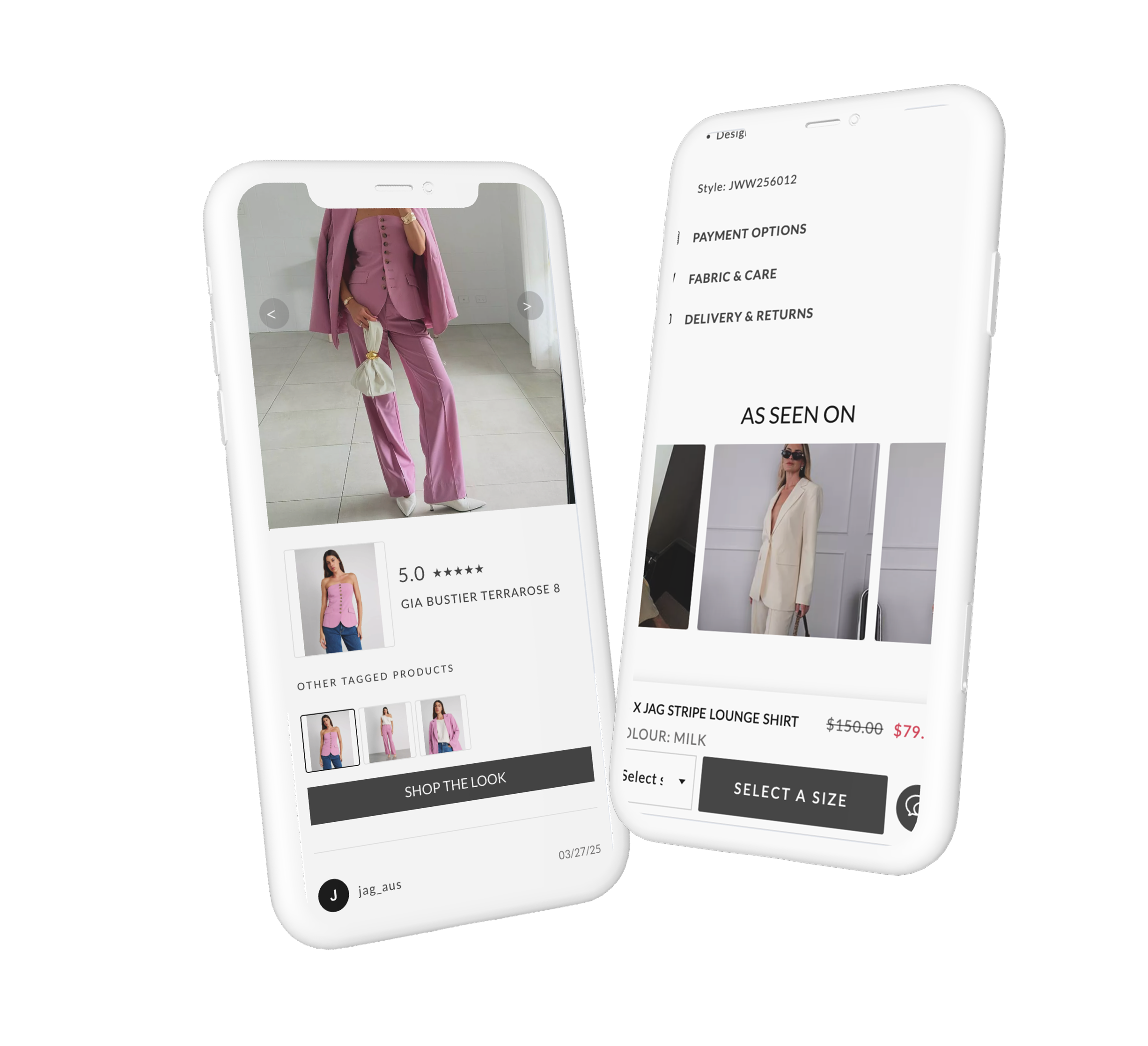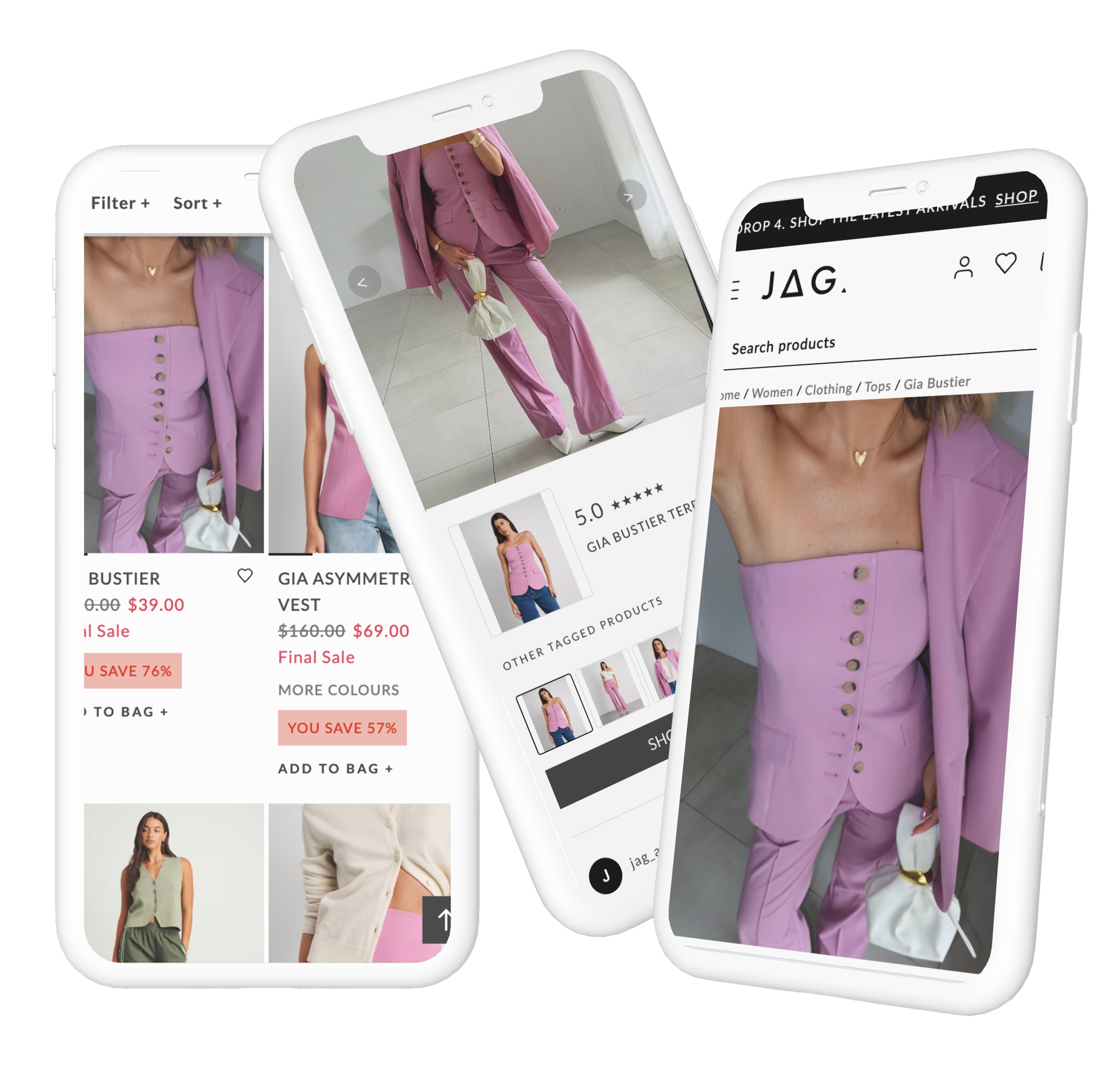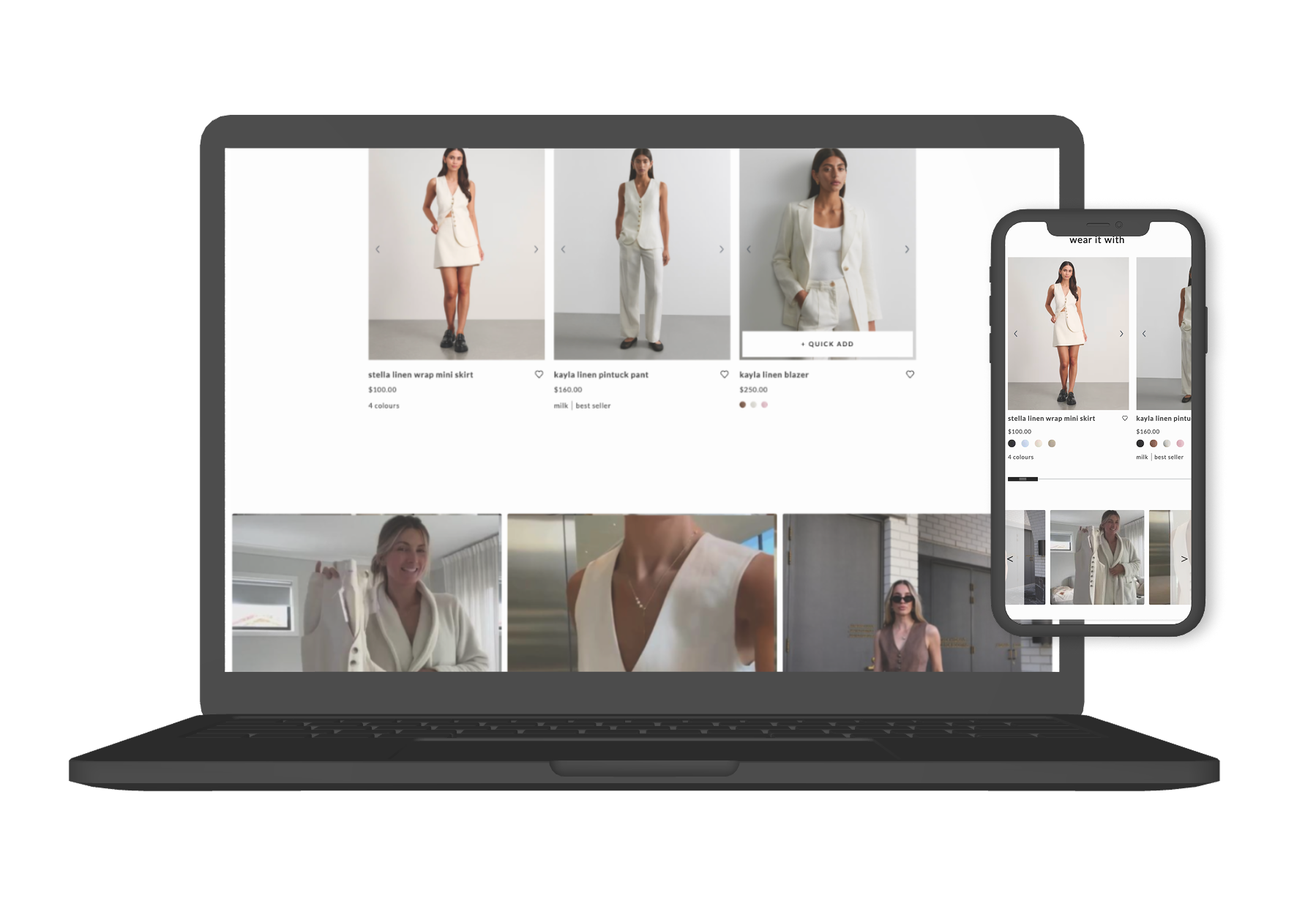increasing AOV for fashion ecommerce
Project Description
JAG is an affordable fashion e-commerce brand with a strong presence on social media. Styling and outfitting are its key strengths, and as part of our omnichannel experience initiative, we set out to enhance online styling through improved product recommendations.
The goal was to increase both our average order value (AOV) and items per transaction.
My Role as lead ux designer
My responsibilities included conducting thorough research, analysing data, gathering requirements from all stakeholders and designing improvements / solutions.
Additionally, I presented the solution to business and handed over to developer team as well as conducted QA testing and tracked impact of our initiatives post-deployment.

Some data points:
Outfits sets and purchasing patterns: Data revealed that the brand’s best-selling products often come in sets. However, customers frequently purchased items individually, missing out on complementary products. By showcasing complete outfits, we saw potential to boost AOV through more bundled purchases.
Influencer-Led Outfits as Purchase Drivers: Customer feedback and data suggested a preference for purchasing entire outfits seen on influencers. This validated the importance of incorporating these exact looks directly into the PDP experience.
Impact of Styling Suggestions: Past research highlighted that outfitting and styling tips positively influence purchasing decisions. Building on this, we hypothesised that curating looks and suggesting “Complete the Outfit” options could further enhance AOV.
Influencer consistency across the journey: This fashion brand heavily relies on influencer marketing for customer acquisition and brand building. To create a consistent experience and align with customer expectations, we aimed to mirror the influencer imagery used on social media and ads on the PLP and PDP, reinforcing the journey from discovery to purchase.
First improvement - Instagram UGC

Through third party, we are tagging products -manually- on Instragram and connecting it to the corresponding product that then feeds into PDP.
Currently this third party doesn't have an AI feature to manually identify the product but we are working on the side to streamline the process.

Results from AB tests on influencer:
Test 1 - Influencer lead Images on PLP: We tested hero images featuring influencers on the New Arrivals PLP. The results were very positive:
27% CTR increase from PLP to PDP
15% increase in ATC rate
Test 2 - Influencer Imagery on PDP: Next, we tested influencer-led visuals on PDPs for 15 products. The influencer variations led to an:
18% improvement in ATC
Test 3 - “Complete the Outfit” Recommendations on PDP: For 10 products, we introduced a “Complete the Outfit” feature, displaying the outfit of the main product. This resulted in:
15% increase in ATC

second improvement - 'complete the outfit'
We developed the 'complete the outfit' feature. The first phase of this feature is to be manually inputted through an attribute to the main product ID.
Logic on recommenders:
- IF product is OOO to be automatically removed
- IF product is on final sale, MD or discounted to display the corresponding badge and correct price
THird improvement - recommenders at mini cart

Based on the success of the above, we decided to add the product recommenders on the mini cart.
Powered by the already existing recommenders, we decided to nudge customers in the minicart
Empty minicart: We suggest the most popular styles purchased in the last month by other customers
Product added to the minicart: When a customer has added an item into the minicart, we display a carousel suggesting complementary styles to their items.




